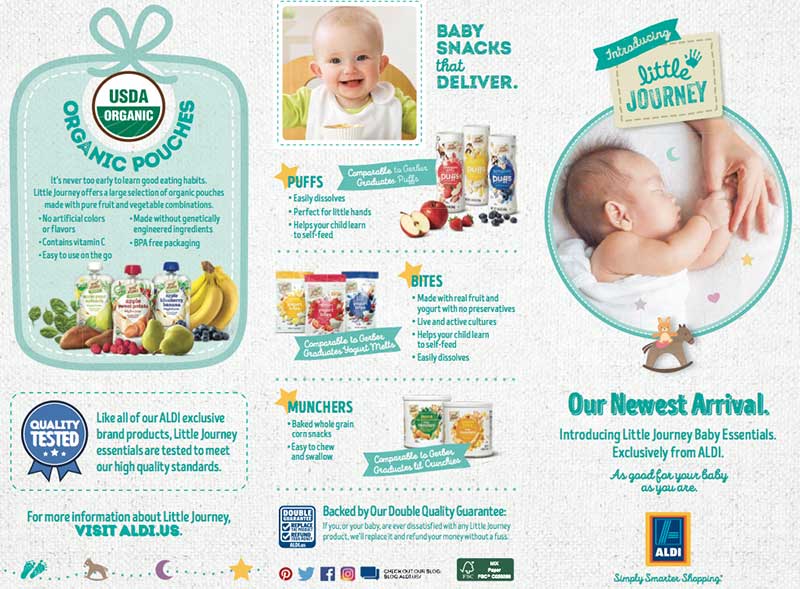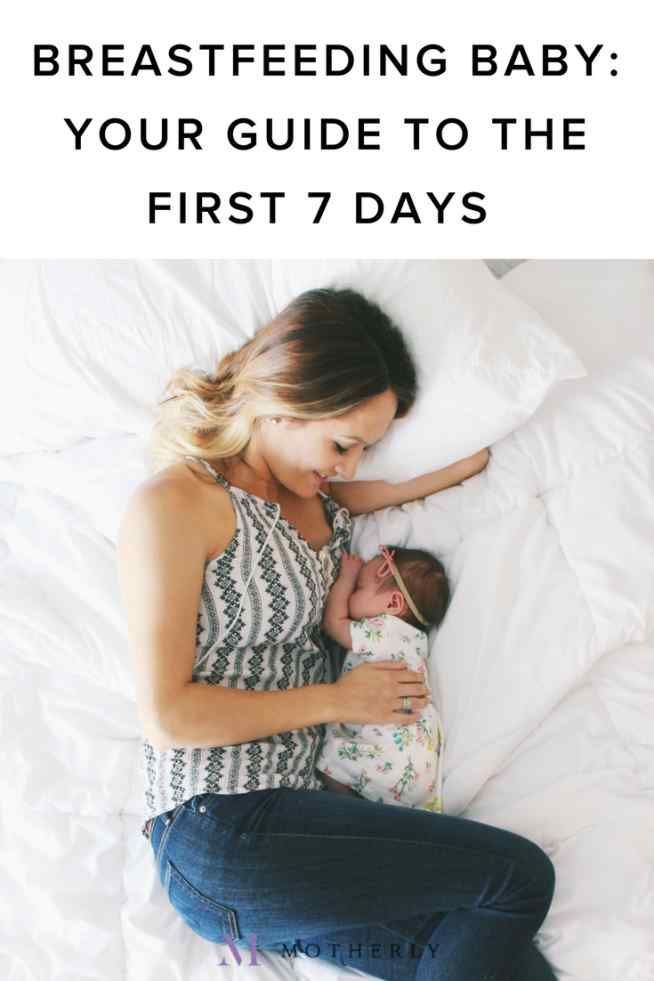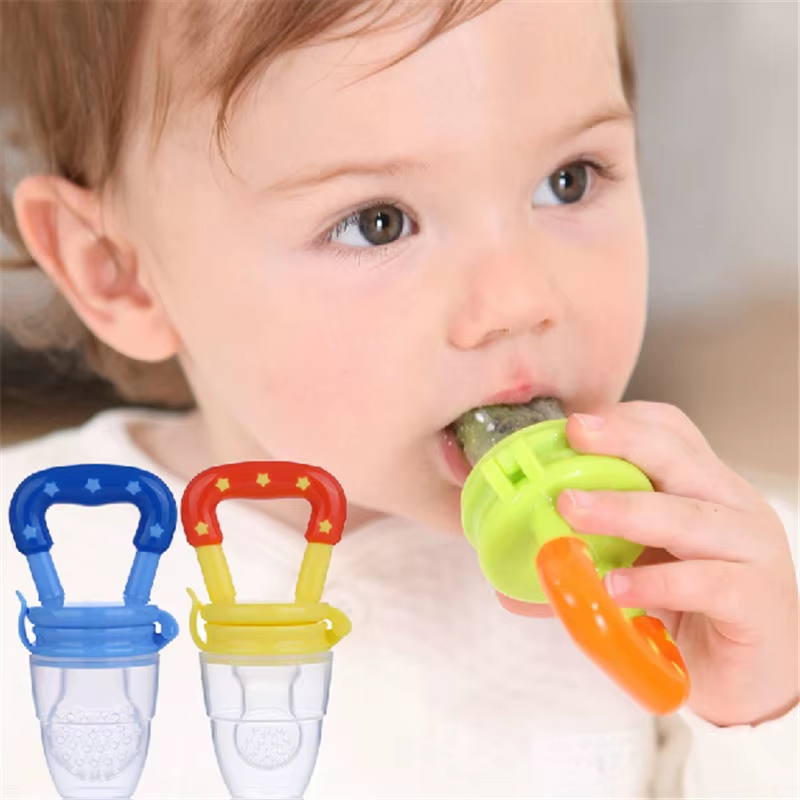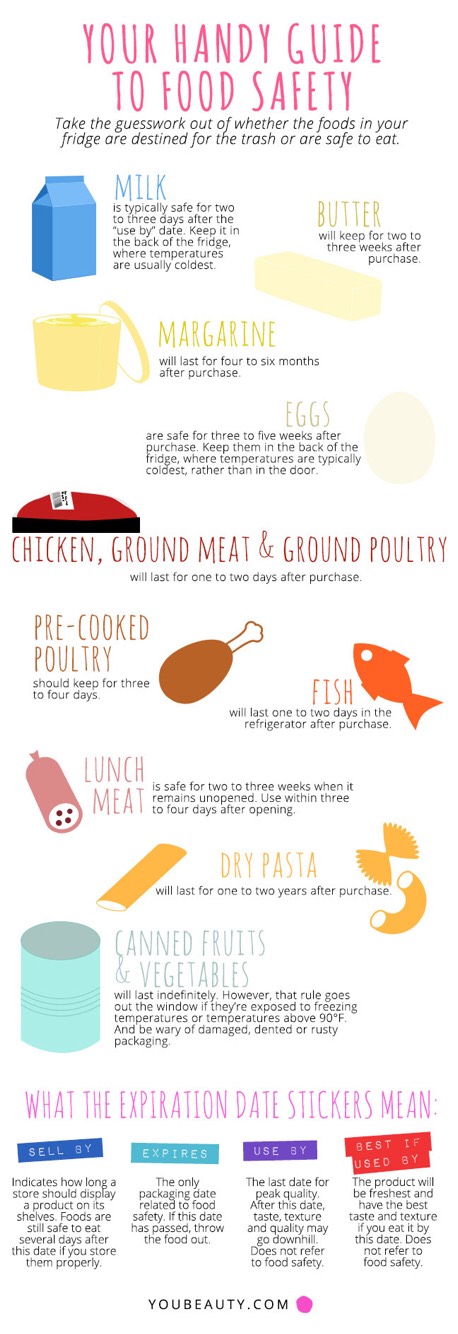Aldi organic baby food pouches
Little Journey, Baby Food at ALDI!
Feeding a child is frustrating. Allegedly it takes 12 times for them to try certain foods before they will eat it. Tommy will love something one day, so I’ll go out and buy it in bulk and then refuse to eat it the next day.
Does he not like the taste? Is he not hungry? Is it not warm enough?
And then, when he doesn’t eat it, you know who does? I do. Even at 9 months old, I’m already eating Tommy’s leftovers. For now they are things like broccoli, eggs or peanut butter toast, not baby food purees obvi. Those get tossed if uneaten 24 hours after they are opened.
I think the food introduction phase kills me because I see how much food we waste. For every pouch I buy that Tommy refuses, I see myself throwing out $2 each time. I sorta feel the same way when I change his diaper and I feel like I didn’t really need too.
Luckily, I discovered a cheaper solution for trying and finding keepers
I’ve long been a fan of ALDI for their no frills store experience that passes on savings to their customers. Their prices are incredible. So I was excited when they recently announced the arrival of Little Journey, an award-winning line of baby products featuring everything from newborn diapers to wipes, formula and organic puree pouches.
The best part is that you’ll find a growing list of premium products exclusively available at ALDI at prices up to 50% less than those at traditional grocery stores*. So hopefully once you find a few things your kiddo likes, you can keep buying them while staying on budget.
This makes going through diapers faster than you thought humanly possible not so bad.
Diapers at ALDI range in price from $4.99 to $12.49 depending on the size and pack quantity. They boast a stretchable waist and side panels, dual leg cuffs, 12-hour leak protection, vitamin E and aloe and are hypoallergenic.
We tried them out and are happy to report back that Tommy had no leakage, blow outs or rashes!
I was impressed by the wipes especially. For a pack of 72, they cost $1.29. As someone who uses wipes on everything, this is an amazing deal.
For a pack of 72, they cost $1.29. As someone who uses wipes on everything, this is an amazing deal.
I am still breastfeeding Tommy but I can imagine that the formula is a huge saving compared to Enfamil or Similac at a regular grocery store.
My favorites are the organic pouches which each cost only $0.79 per 4 oz. Tommy runs hot or cold on pouches but he really likes these especially the apple, pear and spinach! They are made with pure fruit and vegetable combinations, without genetically engineered ingredients and BPA free packaging.
I like pouches because they introduce vegetables like spinach to Tommy that he otherwise wouldn’t be eating on a regular basis. I know I can make food from scratch with spinach but a good pouch is easy.
Tommy also is really into eating with his own fingers so the puffs and munchers are awesome. Both cost $1.39 for a 1.48 oz package. Tommy would eat only cheese puffs if I’d let him.
If you haven’t been to ALDI before, you are in for a shocking surprise as to how affordable grocery shopping really can be. Some things to note before you go is that you’ll need a quarter to grab a shopping cart at the start of your experience, your own bags and that the unique shelving is to save money. Everything they do is to reduce their costs to run a business to keep the products priced low.
Some things to note before you go is that you’ll need a quarter to grab a shopping cart at the start of your experience, your own bags and that the unique shelving is to save money. Everything they do is to reduce their costs to run a business to keep the products priced low.
You can find an ALDI located near you by checking this location finder. If you haven’t been, you really ought to go and check it out. They have some of the best European chocolate! Curious what it looks like to shop at ALDI? I shot this video a few years ago.
This post is sponsored by ALDI. All thoughts and opinions are my own.
*Based upon a price comparison of comparable products sold at leading national retail grocery stores.
Tweet
The (ugly) Truth About Baby Food Pouches | Are Homemade Pouches For Babies Good Or Bad | Do Baby Food Packets Grow Mold | Amara
The (Ugly) Truth About Baby Food Pouches
It’s hard to believe that baby food pouches only came on the market about a decade ago, give or take. To put it mildly, these things became insanely popularfast. In 2018, theNew York Times reported that pouches account fora full quarter of the baby food market —wow. This is a pretty staggering rise to prominence, when you think about it.
To put it mildly, these things became insanely popularfast. In 2018, theNew York Times reported that pouches account fora full quarter of the baby food market —wow. This is a pretty staggering rise to prominence, when you think about it.
In real life, the prominence bears out. I see pouches everywhere, and it’s true: pouches take up at least 25% of the shelf space on the baby food aisle (which is itself a dizzying array of products and options…).
If you’re a parent, we probably don’t have to tell you why pouches became so popular so quickly: they’re the epitome of convenience. Besides the fact that kidsreally like them, pouches require no prep, no feeding, no refrigeration, no mess, and virtually no clean up. They’re easy to pack, easy to store, easy to hand over, and given that so many of them are organic and/or contain exotic fruits and vegetables, they’re really easy to feel good about.
But too much of anything is not always a good thing.
Pouches are a great option for any number of circumstances and situations (more on this shortly…), but according to the best experts, over relying on them is actually problematic. Here’s why:
-
Pouches don’t teach young children about food and eating.
Every time a baby or toddler sits down to eat presents a learning opportunity in more ways than one. And unfortunately, pouches detract from that learning more than they contribute to it.
Eating — whether it’s by hand or getting spoon-fed — entails using fine motor skills, coordination, and specific oral mechanics. It’s a tactile experience that furthers a child’s developmental abilities in multiple areas. If eating is an actual activity, “eating” from a pouch is passive. It is, in a way, a lost developmental learning opportunity.
When children eat solids — including purees — they’re learning to take bites, to move food around in their mouths, to use their tongues, and to chew. Pouches demand none of this of children. As Kara Larson, a feeding specialist and speech language pathologist at Boston Children’s Hospital said in an interview: “if children are just sucking from a pouch all the time, we worry that some of that tactile experience with food might be lost.”
As Kara Larson, a feeding specialist and speech language pathologist at Boston Children’s Hospital said in an interview: “if children are just sucking from a pouch all the time, we worry that some of that tactile experience with food might be lost.”
Eating is also a sensory experience, and this is another area in which pouches come up short. Babies and toddlers learning to eat take ineverything about foods — feeling, seeing, and smelling are a huge part of how they learn about different foods. With pouches, all this sensory intake is essentially lost: children can’t see what color their “food” is, can’t smell it by and large, and don’t feel its textures.
Not to mention, to a large extent,they also can’t even really taste it. Here’s what I mean…
The main ingredient in most pouches tends to be a sweet food, usually a fruit. And those sweet foods effectively dominate the entire flavor profile. So even if a pouch does contain spinach or broccoli or the like,children can’t taste it.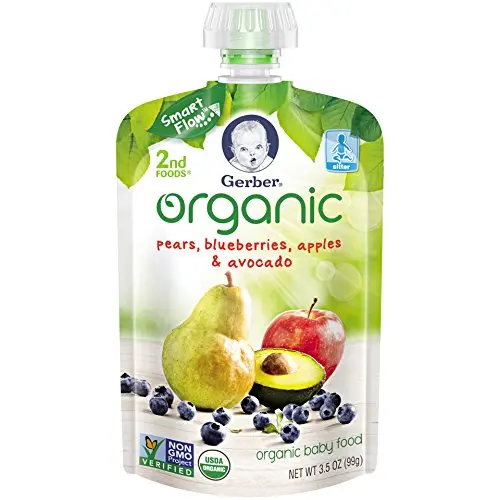 Like, at all.
Like, at all.
Indeed, partly because of this sweet-taste-masking effect, young children usually can’t differentiate between any of the flavors in any given pouch. I found it helpful to consider what’s going on for me whenever I have a smoothie — I can often pull outsome of the individual flavors, but not all of them. And even the singular tastes I can detect,I can only detect because I already know what they taste like.
Babyhood and toddlerhood together comprise a critical period of time for learning about foods — and learning to like foods! If toddlers don’t have experience with actual vegetables, they may be less likely to enjoy them down the road. As pediatrician Dr. Natalie Muth told the Times, “kids need the taste of what the actual food is to come to like it later.” IOW, apple-pear-kale pouches aren’t helping children learn to love kale.
All of this is to say that children don’t learn much about foods (if anything at all) from pouches — they’re not becoming familiar with the foods or even the flavors included — which is a problem because this is a huge piece of how children come to actually like foods.
-
Pouches aren’t as nutritious as manufacturers would like us to believe.
There is ahuge problem in the way these pouches are marketed — it’s totally misleading, in my opinion.
We parents are led to believe that pouches are a great way to “get” our children to eat healthy, and that we can trust a pouch to put plenty of fruits and vegetables into our kids’ systems. Many pouches also contain foods you won’t find in conventional baby food jars, like quinoa or kale or pomegranate or avocado — and the message we are led to believe is that these inclusions make poucheseven more healthy. They contain all these awesome foodie foods! But pouches actually aren’t all that healthy, and as mentioned above, the delivery mechanism — single-texture blends that children “drink” more than they “eat” — isn’t teaching children to come to know and loveactual fruits and vegetables.
Some pouches contain added sugars (grrr), and even among those that don’t the sugar content is still disproportionate compared to the real foods they started out as.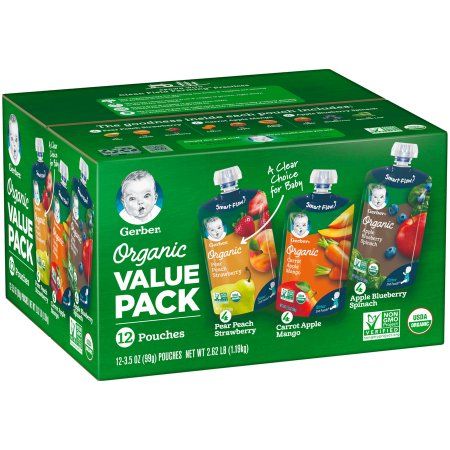 This is true of jarred baby food in general (the high-heat processing that ensures shelf-stability also nukes all the “good stuff,” including vitamins, minerals, fiber, and flavor, while leaving undesirable contents like sugar) — but some research indicates that pouches in particular tend to have higher sugar contents than baby food jars.
This is true of jarred baby food in general (the high-heat processing that ensures shelf-stability also nukes all the “good stuff,” including vitamins, minerals, fiber, and flavor, while leaving undesirable contents like sugar) — but some research indicates that pouches in particular tend to have higher sugar contents than baby food jars.
The lack of fiber and texture is also a huge loss — because fiber is super important for digestive health and also contributes to feeling satiated. In fact, some experts worry that because children can suck down pouches so much more quickly than they could eat the same thing (and they aren’t getting any measurable amounts of fiber from them), pouches might actually impact children’s learning about feelings of satiety.
The convenience factor, too, can be so damntempting. Because they are so easy and children like them so much, many parents (myself included — guilty) use pouches as a sort of management strategy in moments of “crisis,” to put an end to things like public tantrums or epic stretches of whining. Admittedly, this probably sends our kids some mixed messages, namely that emotional or inappropriate behavior can and will be tamed with food (read: sugar). Without being alarmist about it, it’s not unreasonable to think that these aren’t necessarily the healthy, ideal lessons many of us are aiming to teach our kids.
Admittedly, this probably sends our kids some mixed messages, namely that emotional or inappropriate behavior can and will be tamed with food (read: sugar). Without being alarmist about it, it’s not unreasonable to think that these aren’t necessarily the healthy, ideal lessons many of us are aiming to teach our kids.
______
All this said — there is a time and a place for everything, and you don’t need to empty your pantry of pouches for all eternity or swear them off entirely. The problem with pouches, as it were, is only apparent if babies and toddlers are consuming them A LOT. As in, multiple pouches per day. As in, so-many-pouches are displacing other sources ofreal food.
Here are some helpful thoughts from experts on when and how to incorporate pouches:
Pouches may be a parent’s best friend in certain situations — and the hands-down “winner” in that category is TRAVEL. Whether you are making a road trip, day trip, plane trip, or whatever, having a pouch on hand for a snack can be life-saving. These kinds of situations are often about getting through them, so do what you need to anddon’t feel guilty about it!
These kinds of situations are often about getting through them, so do what you need to anddon’t feel guilty about it!
Experts suggest having some sort of “ground rules,” so to speak, about using pouches — as opposed to using them randomly, on the fly, or as a reactive strategy to calm down your child. Put another way, they recommend making decisions about when and how you plan to use pouches ahead of time, rather than in the moment.
Look for products with no added sugar, and consider buying smaller sized pouches if they’re available.
Simply choosing to feed your child the contents of a pouch can change a lot about the situation — it reintroduces the feedingexperience to the equation, is much more interactive, and also takes more time. This isn’t to say that children need pouches — not at all. Pouches were made for and marketed toUS, parents. And there are plenty of reasons to like them. But our children don’t need them, and they’re certainly not benefitting from them.
This isn’t to say that children need pouches — not at all. Pouches were made for and marketed toUS, parents. And there are plenty of reasons to like them. But our children don’t need them, and they’re certainly not benefitting from them.
As we said, there’s a time and a place for everything — and pouches aren’t “all bad”! When we offer them with intention and in moderation, pouches can be wonderful. But it’s also important to see beyond the deceptive marketing that would have us believe pouches are a boon to any child’s culinary education. Not so — as always, in the end, real food wins…
How Baby Food Pouches are Made (A Behind the Scenes Look) & How We're Different
Most parents can admit to staring and staring at the supermarket shelf, looking the baby food aisle up and down, wondering what is the best possible baby food to give their baby. There are more flavors of baby food pouches available than there are cereals, but there is one thing they all have in common: the way the baby food pouches are made.
But wait, they’re 100% fruit right? They don’t list “sugar” as an ingredient… They are “organic,” brain smart, and filled with fiber. How can these squeeze pouches be badfor your little one?
When we started Amara, we knew that no one was getting more time anytime soon. So we searched high and low for the best way to bring fresh food to supermarket shelves without sacrificing essential nutrients and vitamins.
We stumbled across a technique that was used centuries ago by the Incans to preserve food. The Incans didn’t just store their food where they lived. They would climb up to the highest mountains, at a much higher elevation than where they lived, and store their food there. Why would they store their food so far away from where they cooked? It turns out the Incans were not just trying to get exercise, they were on to something. The pressure and cold of the high mountains actually preserved the food, all while maintaining the taste, texture and nutrients of fresh fruits and vegetables.
Crazy right? Well, we started researching more to see how we could use this ancient wisdom. That’s when we found the technique we use today. At Amara, we minimally process the fruits, veggies and grains so you can get the closest thing to homemade when you don’t have time to make it yourself. We just take out the water, so you can take homemade with you, anytime, anywhere.
Now that’s what we do. But what do other baby food companies do? Why are those pouches so high in sugars? Why do they have the same texture and consistency, all kind of tasting like apples?
Creating a shelf-stable pouch of baby food
Shelf-stable means that the food can sit on a shelf without refrigeration or spoilage for quite some time. Jarred shelf-stable baby food lasts for about two years. Pouch-stored shelf-stored baby food lasts for one year. This lets supermarkets and baby food companies take their time in selling the product because they don’t have to worry about spoilage.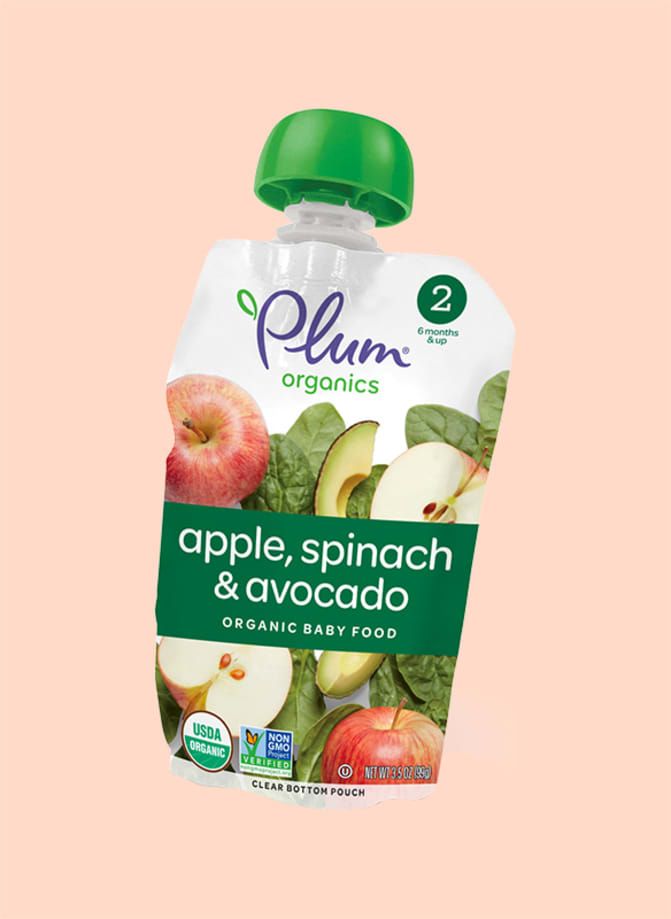
Unfortunately, the way they create shelf-stable food isn’t exactly good for its nutritional value. They have to use processes that remove the causes of spoilage (the bad stuff), but these same processes also reduce nutrition (the good stuff).
The extraordinary high levels of heat the traditional jars and pouches are using is the major culprit. Heat breaks down vitamins and destroys enzymes that are needed for proper digestion. Now, after so much heat – you are left with a boiled down mixture that is closer to jam than wholesome fresh food.
So let’s follow how traditional baby food is made….
First, most shelf-stable baby food companies don’t process raw vegetables and fruits themselves. They buy them from other companies in the form of a puree or a concentrate. These purees and concentrates start by chopping and washing vegetables and grinding them down (which heats up the puree.) Next, stones, skins, and seeds are removed, but along with these, the fiber is also removed. This creates a smooth consistency, but babies need fiber!
This creates a smooth consistency, but babies need fiber!
So far, it’s like making homemade baby food, only maybe not so much heat because you’re not using industrial equipment (you don’t normally heat your food over 185 degrees F for a long period of time)…. But that’s not it.
Then, the puree is “deareated” to remove oxygen (which causes food to spoil) and then pasteurized. As we all know, pasteurization requires high heat for a long time to kill bacteria. This high heat-processed puree is sent to the baby food companies. If a concentrate is called for, the puree goes through an evaporator to draw out water before shipping. If you’ve ever tasted frozen juice concentrate, you know it’s like swallowing a spoonful of sugar.
Now, enter baby food companies:
Baby food companies buy these pureed (can we still call them fruits and vegetables?) and blend them to create their flavors. They sometimes add water for consistency, and they can also add other things. Acids (e.g. citric acid) is added for further bacterial control as well as to prevent browning of the product over time. Nutrient powders may also be added to make up for the lost nutritional value caused by the earlier processes.
Acids (e.g. citric acid) is added for further bacterial control as well as to prevent browning of the product over time. Nutrient powders may also be added to make up for the lost nutritional value caused by the earlier processes.
So let’s go over that….
- Company X grinds fruit or vegetable down to a puree. Heat step to keep it shelf stable and ready to ship to Baby Company.
- Baby Company blends said purees with their recipes. May add nutrient powders, emulsifiers or acids to keep it looking presentable.
- Usually another heat step here to make sure nothing is alive (remember, we have to kill the bad stuff….Oops! There goes the good stuff too.)
Ok, so now we have that pureed recipe of baby food company X. What next?
Then the puree has to get packaged. If it’s in a jar, it’s the same process used for home canning, which requires high levels of heat. But did you know that pouches have to be heated as well? This has to be done to kill any bacteria in the pouch, but again, it raises the temperature of the food. These pouches, while convenient, do contain compounds that might leach into the food under high heat such as BPA and aluminum.
These pouches, while convenient, do contain compounds that might leach into the food under high heat such as BPA and aluminum.
So now you have your pureed heated mix according to the recipe for baby food company X. Then it’s put in a pouch. The pouch is heated AGAIN at high levels to make sure that there is no bacteria or mold in the pouch.
…. Pausing. We’re pretty far from those fresh fruits and veggies you pinned right?
Right.
So. Shelf-stability may help consumers know they’re getting unspoiled baby food, but by the end of it, fruits and vegetables have been turned into a kind of jam with no texture and not the best nutrition. (Ever wonder why your baby loves the pouches but doesn’t like the real veggies when you make them?)
Now, I want to pause here. We are all feeling pretty bad about those pouches and jars right? I mean, we didn’t paint the prettiest picture here. Because it’s not. BUT. I do want to stress here, there are moments that your baby is screaming or you’re in the car and the pouch really is the easiest option. And THAT’S OKAY. We don’t walk around in a perfect white onesie all the time, do we? We know there are times for the pouch, but just treat it as an occasional snack or dessert, not an everyday kind of thing.
And THAT’S OKAY. We don’t walk around in a perfect white onesie all the time, do we? We know there are times for the pouch, but just treat it as an occasional snack or dessert, not an everyday kind of thing.
How Amara differs
We look carefully at every single ingredient and source it the best possible way. That’s right. We don’t just use one co packer that hands us a finished product. We look at every ingredient and find the best process and combination for your little one. We don’t use additives; we don’t use emulsifiers or any of those funny fillers. We just do real food, real ingredients. We bring you the best possible baby food, without you having to chop and cook everything yourself. It's a difference you can see:
Imagine the fruits and veggies just without the water. Now that's a pouch you can actually feel proud of. At Amara, baby food is made better to taste better.
Get 15% off your first purchase with us with code:
ONLYTHEBEST
Sources:
https://www. stlouischildrens.org/health-resources/pulse/pros-and-cons-baby-food-pouches
stlouischildrens.org/health-resources/pulse/pros-and-cons-baby-food-pouches
https://www.firstfiveyears.org.au/child-development/the-important-facts-on-baby-food-pouches
https://www.cleveland.com/news/2019/03/baby-food-pouches-may-pose-risks-for-development-health-when-overused.html
https://pubmed.ncbi.nlm.nih.gov/31340487/
https://www.nytimes.com/2018/06/19/well/rethinking-baby-food-pouches.html
https://www.nytimes.com/2020/04/17/parenting/baby-food-pouches.html
http://science.howstuffworks.com/innovation/inventions/5-ancient-incan-inventions5.htm
USDA Table of Nutrient Retention Factors
http://nutritiondata.self.com/topics/processing#ixzz1fPecqOzH
http://www.livestrong.com/article/547867-what-does-cooking-do-to-vitamin-c/
https://www.scientificamerican.com/article/raw-veggies-are-healthier/
http://www.beyondveg.com/tu-j-l/raw-cooked/raw-cooked-2f.shtml
http://feedkids.com/2010/09/freeze-dried-dehydrated-fresh-frozen-or-canned-what-is-the-best-source-of-nutrition/
Gupta et al 2013, Retention of nutrients in green leafy vegetables on dehydration; J Food Sci Technol 50 (5), 918-925.
Biodegradable bags with logo, biodegradable packaging. Delivery across Russia.
Delivery throughout Russia
Biodegradable packaging with your logo
Branded biodegradable bags - affordable environmental innovations at the service of your image
- Biodegradable bags - packaging The use of biodegradable packaging is a sign of concern for the client and the environment, a symbol of the desire for innovation.
- biodegradable bags are identical to regular bags in strength and appearance.
- Biodegradable polyethylene bags decompose in 1.5-2 years under the influence of oxygen, water and light.
- Guaranteed shelf life of biodegradable polyethylene bags containing d2w additive is 14 months.
- Biodegradable bags is only 10-15% more expensive than conventional plastic bags.

- Biodegradable bags have already become popular in more than 60 countries around the world. The largest wholesale consumers are worldwide chains such as Walmart, Aldi, Pizza Hut, KFC, Tesco and hundreds of others.
- The largest Russian retailers also prefer biodegradable bags . Among them: The Seventh Continent, M-Video, Magnolia, OK, Pyaterochka, Technosila, SPAR (some cities).
- Your advertisement on biodegradable bags will be sold in thousands of copies. Emphasize your concern for the ecology of the planet!
- We consider the phased transition from the production of conventional bags to the production of biodegradable bags to be our important socially responsible mission. We hope that you will support us!
Material - biodegradable polyethylene HDPE or LDPE with d2w oxo additive (transparent, white, dyed).
Types of biodegradable bags - "T-shirt", a bag with a die-cut handle, a bag with a loop handle, any types of filling and packaging bags.
Minimum circulation of biodegradable bags with your logo - 10 thousand copies.
Print - flexo printing up to 8 colors
Order biodegradable bags >>
Read article about biodegradable packaging with d2w oxo additive >>
Delivery of biodegradable bags throughout Russia
TulaPak delivers biodegradable bags to all cities of Russia. You can check the cost of delivery to your city here.
Biodegradable bags - storage conditions
Biodegradable bags should be stored in a dry, cool place away from strong light and heat sources. The temperature must not exceed 30°C. Under proper storage conditions biodegradable bags have a shelf life of 14 months from the date of manufacture.
Partially opened packages of biodegradable bags must be sealed and protected from moisture, direct sunlight and heat - in this case, this will not affect the period of operation.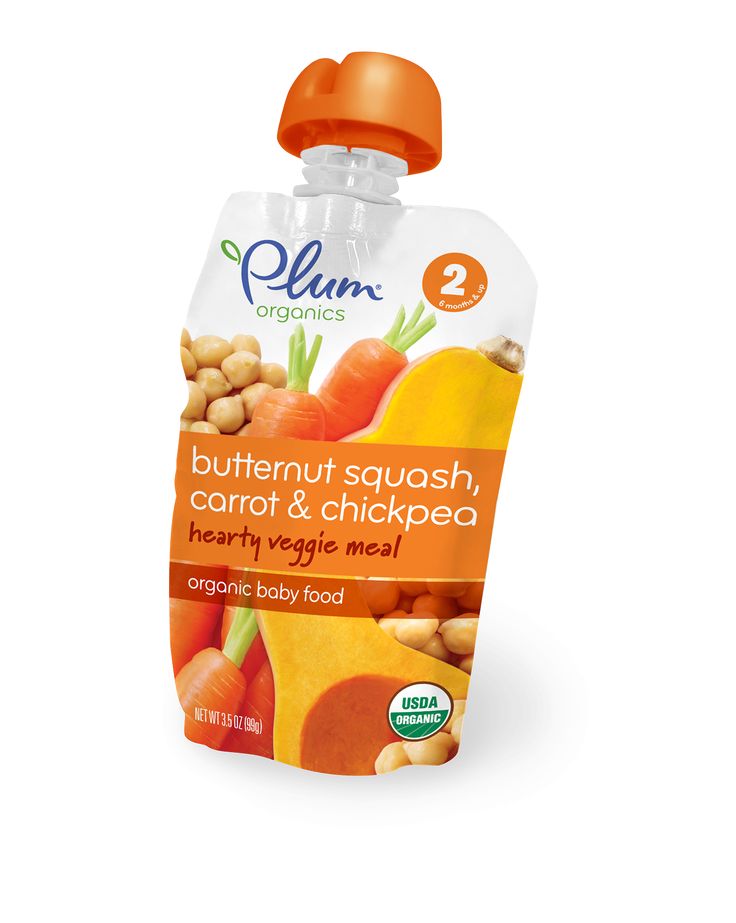 Otherwise, they may become unusable. First of all, lose your strength.
Otherwise, they may become unusable. First of all, lose your strength.
Biodegradable bags - Compliance with standards
Biodegradable bags are made of d2w oxo-added polyethylene or similar plastic material approved for contact with foodstuffs in accordance with Directive 2002/72 EC and its amendments.
| TulaPak | We are in social networks: | Share: | |||
| call free: tel./fax in Moscow: tel./fax in Tula: | 8 800 700-05-65 +7 (495) 960-87-78 +7 (4872) 35-87-75 | ||||
What food is being recalled right now in 2021?
Food Memories of 2021
Tyson Foods Inc. recalled 8,492,832 pounds of ready-to-eat chicken products due to possible listeria contamination. Serenade Foods has recalled 100,000 pounds of frozen stuffed chicken products sold nationwide due to possible salmonella contamination.
Serenade Foods has recalled 100,000 pounds of frozen stuffed chicken products sold nationwide due to possible salmonella contamination.
In this regard, is there a recall for green beans? April 25, 2022 - Alpine Fresh is recalling bags of green beans sold nationwide due to the possible risk of listeria. , according to the FDA. 1-pound bags of green beans sold under the "Hippie Organics" brand were sold at Aldi, Lidl and Whole Foods.
Which products are subject to the recall? Sort by
| Time | Trademarks) | Item description: |
|---|---|---|
| 05/10/2022 | Van Leeuwen | Dairy Free Frozen Dessert Oat Milk Brown Sugar Chunk |
| 06/05/2022 | Grandma's Kitchen, Bernat's, Golden Eagle | Vareniki stuffed with cheese |
| 06/05/2022 | NaturePlus | Keto Live Sugar Control Caps |
| 05/05/2022 | Matiz | Valencian almond |
Is there a review for Del Monte green beans? Del Monte Foods is recalling 843 cases of French String Beans because about 50 of them contained cans of vegetables that had not been cooked.
Meanwhile, what kind of food is being recalled right now in 2022?
Issue/Product: Salmonella/Elite branded products: luxury chocolates, cakes, wafers, energy snack cereals, energy chocolate rice cakes, chewing gum and toffees, including all product codes currently on the US market.
Contents
Is there a review for baby food 2021?
Walmart, maker of Parent's Choice, has not recalled baby food since its 2021 toxic heavy metal exposure. However, two years earlier, in 2019, baby food products were recalled under the Parent's Choice program due to the presence of metals.
Is Kroger's onion safe now?
Business Insider reports that Thomson onions are sold under various brand names at Kroger, Walmart, and Food Lion, but the Food and Drug Administration recommends throwing away any onions or products that contain onions unless you're sure that the onion is not infected. Produced by Thomson.
Why are there so many reviews now?
Why are there so many product reviews lately? Answer: new laws and new technologies.
Is there a review for olives?
According to a US Food and Drug Administration report, "undeclared sulfites" were found in the company's olives. Damaged products are in one pound cans marked "2021/10/15" and "588552-331090" and should be discarded immediately.
Is there arsenic in oatmeal?
Choose baby cereals such as oatmeal, mixed cereals, quinoa, barley, buckwheat and wheat. They are naturally low in arsenic.
Is Gerber still remembered?
Unfortunately, despite the danger to babies and toddlers, Gerber has yet to recall baby food due to its arsenic, lead, cadmium and mercury content.
Is there arsenic in baby oatmeal?
Now let's look at baby cereals: not rice-based. Five of the 11 rice-free baby cereals tested (oatmeal or multigrain) contained high levels of arsenic, exceeding the HBBF limit of 25 ppb. Nine of 11 rice-free baby cereals (oatmeal or multigrain) tested contained high levels of lead, exceeding the 1 part per billion limit of AAP and EDF.
Where does Walmart get its onions from?
According to the investigation, contaminated onions can be traced back to two sources: ProSource Produce in Haley, Idaho, and Keeler Family Farms in Deming, New Mexico. The onion was originally imported from the state of Chihuahua, Mexico and includes red, yellow and white onions.
Do Walmart onions have salmonella?
The Food and Drug Administration released a partial list of retailers that may have been selling onions from Mexico and have been implicated in the ongoing Oranienburg salmonella outbreak.
Is it safe to buy onions from Walmart now?
« Onions can last up to three months if stored in a cool, dry place. Restaurants, retailers, and consumers who suspect they have purchased such onions may still be holding them and should not eat, sell, or serve them, but should throw them away,” the FDA warns.
Is there a review of Broccoli 2021?
CFIA recalls deli products containing broccoli due to Listeria monocytogenes. Ottawa, August 13, 2021 - The industry is pulling some deli products containing broccoli from the market due to possible Listeria monocytogenes contamination. Consumers should not consume the recalled products described below.
Ottawa, August 13, 2021 - The industry is pulling some deli products containing broccoli from the market due to possible Listeria monocytogenes contamination. Consumers should not consume the recalled products described below.
Is there a review for beef 2021?
The ground beef recall items were produced on December 20, 2021 and have the facility number “EST. 965” inside the USDA verification mark or printed next to the timestamp and use or freeze by date.
Which cheese do people remember 2021?
Whole Foods recalls cheese from stores in 22 states due to listeria risk
| product name | PLU | Date range sold |
|---|---|---|
| Porter Cheddar | 93579 | May 17 - July 26, 2021 |
July 27, 2021
Can canned olives be botulism?
A total of 19 deaths from botulism in three states that were definitively linked to canned California olives made the outbreak one of the deadliest outbreaks in the US.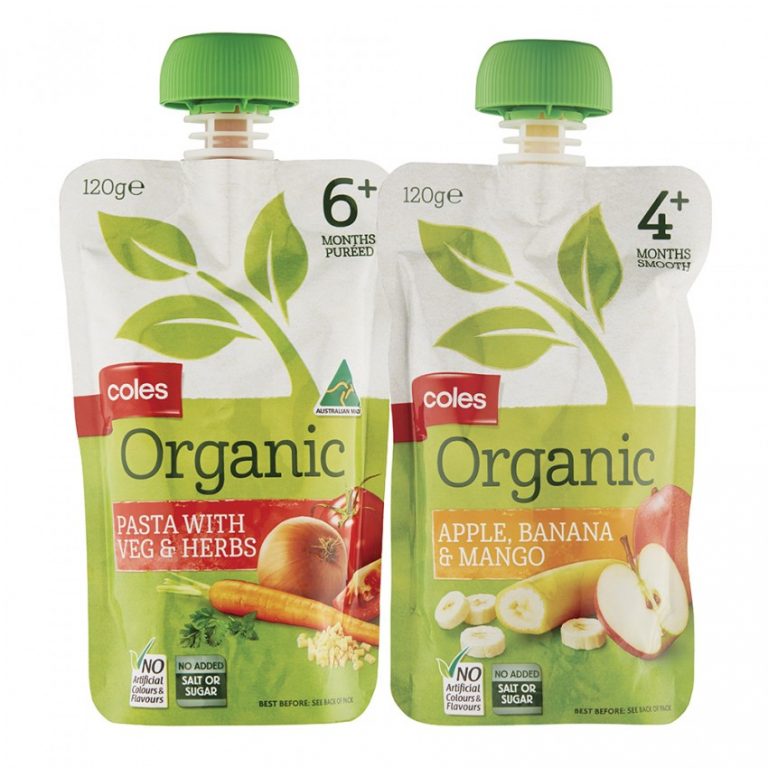
Is it possible to get botulism from olives?
Organic isn't always safer when it comes to botulism: salt The botulism outbreak linked to organic Italian olives makes it clear that even food that seems untouched can contain deadly pathogens.
Can black olives cause food poisoning?
Eating bad olives can also lead to diarrhea and/or vomiting, typical symptoms of food poisoning. By emptying your stomach, taking activated charcoal, and drinking enough water, you will get over this problem pretty quickly.
Which rice does not contain arsenic?
White basmati rice from California, India, and Pakistan and sushi rice from the US may contain less arsenic than other types of rice. Vary grains, especially if rice is an important part of your diet. Think low-arsenic grains like amaranth, quinoa, bulgur, and farro.
Does washing rice remove arsenic?
An FDA study also shows that rinsing rice before cooking has minimal effect on the arsenic content of cooked grains and washes iron, folic acid, thiamine and niacin from polished and parboiled rice.
Which food contains the most arsenic?
The highest levels of arsenic (in all forms) in foods are found in seafood, rice, rice cereal (and other rice products), mushrooms, and poultry, although many other foods, including some fruit juices, may also contain arsenic .
Baby food recalled?
2019 Baby Food Review
Products Affected (all stamped “best before: 7/2021”): Milk Lady's Tea; UPC 7-99632-05658-4 with lot number ML6271950. Serene children's herbal tea; UPC 7-99632-05656-0 with lot number PB781950. Herbal tea Diges-Teas; UPC 7-99632-05665-2 with lot number DT7619100.
Which brand of baby food is the safest?
The safest baby food
- Yumi. In addition to using only organic ingredients, Yumi carefully tests its products for toxic heavy metals.
- Once Upon a Farm. Another baby food brand that is firmly committed to safe foods is Once Upon a Farm.
- Square baby.
